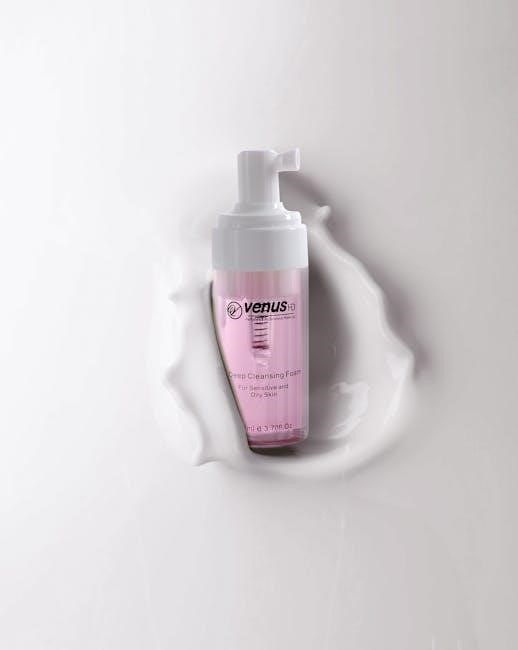Intra-aortic balloon pump nursing care involves
complex medical procedures requiring
specialized training and equipment
to ensure patient safety and recovery
Purpose of the Guidelines
The purpose of the guidelines is to provide a comprehensive framework for intra-aortic balloon pump nursing care, outlining the key principles and best practices for managing patients with IABP․
These guidelines aim to promote consistency and standardization in IABP nursing care, ensuring that patients receive high-quality care and minimizing the risk of complications․
The guidelines cover various aspects of IABP nursing care, including patient assessment, monitoring, and management, as well as troubleshooting and problem-solving strategies․
By following these guidelines, healthcare professionals can ensure that patients with IABP receive optimal care, leading to improved outcomes and reduced morbidity and mortality․
- Establishing a quick reference guide for IABP therapy
- Providing a framework for safe and effective use of IABP
- Promoting consistency and standardization in IABP nursing care
Overall, the purpose of the guidelines is to support healthcare professionals in delivering high-quality IABP nursing care, ultimately enhancing patient outcomes and experiences․

Assessment and Monitoring of Patients with IABP
Patients with IABP require close monitoring and assessment of their hemodynamic status and overall clinical condition to ensure optimal care and management always effectively․
Importance of Critical Care Nurses Knowledge and Practices
Critical care nurses play a vital role in the management of patients with intra-aortic balloon pumps, and their knowledge and practices are crucial to ensuring optimal patient outcomes․
Effective nursing care is essential for monitoring IABP function, preventing complications, and supporting recovery in high-risk procedures․
Nurses must possess a deep understanding of the principles of IABP therapy, including the importance of proper balloon sizing, positioning, and timing․
Additionally, nurses must be able to identify and respond to potential complications, such as limb ischemia, bleeding, and infection, and be proficient in the use of IABP equipment and troubleshooting techniques․
Ongoing education and training are essential to ensure that critical care nurses have the knowledge and skills necessary to provide high-quality care to patients with IABP․
By staying up-to-date with the latest research and guidelines, nurses can provide evidence-based care that improves patient outcomes and reduces the risk of complications․
Collaboration with other healthcare professionals is also essential to ensure that patients receive comprehensive and coordinated care․

Management of Patients with IABP
Patients with IABP require close monitoring and specialized care to ensure optimal outcomes and prevent complications effectively always․
Positioning of the Balloon Tip
The positioning of the balloon tip is crucial for effective intra-aortic balloon pump therapy, and imaging studies such as chest X-rays are used to confirm proper placement․
Accurate positioning ensures that the balloon is functioning correctly and reduces the risk of complications․
Healthcare providers use fluoroscopy to visualize the balloon tip and adjust its position as needed․
Guidelines recommend that the balloon tip be positioned in the descending aorta, just distal to the left subclavian artery․
Proper positioning of the balloon tip is essential for optimal patient outcomes, and critical care nurses play a key role in monitoring and maintaining correct balloon placement․
Regular assessments and adjustments are necessary to ensure that the balloon remains in the correct position and functions effectively․
By following established guidelines and using imaging studies to confirm proper placement, healthcare providers can ensure that the balloon tip is positioned correctly, minimizing the risk of complications and optimizing patient care․
Complications and Prevention
Complications include limb ischemia and bleeding requiring prompt intervention․
Aortic Compliance and Systemic Vascular Resistance
Aortic compliance and systemic vascular resistance play a crucial role in the effectiveness of intra-aortic balloon pump therapy․ The balloon volume is set to 50 to 60 of the patient’s stroke volume, and decreases in aortic compliance or systemic vascular resistance can mitigate the effectiveness of the therapy․
Nursing care involves monitoring the patient’s hemodynamic parameters and adjusting the balloon pump settings accordingly․ The goal is to optimize the patient’s cardiac output and reduce the risk of complications․
Understanding the relationship between aortic compliance and systemic vascular resistance is essential for providing effective nursing care to patients with intra-aortic balloon pumps․ By continuously monitoring the patient’s condition and adjusting the therapy as needed, nurses can help improve patient outcomes and reduce the risk of complications․

Nursing Care Study and Guidelines
Nursing care guidelines and study protocols are essential for effective patient care and management of intra-aortic balloon pumps with specific recommendations and procedures always․
References and Resources
Several studies and guidelines have been published on intra-aortic balloon pump nursing care, including the British Journal of Cardiac Nursing and Critical Care Nurse․
Online resources such as the American Heart Association and the Society of Critical Care Medicine provide valuable information and guidelines for nursing care․
The Datascope IABP is a commonly used device, and the company provides training materials and resources for healthcare professionals․
Additionally, the Lothian Critical Care Intra-Aortic Balloon Pump Guideline is a useful resource for critical care nurses․
These references and resources can help nurses provide high-quality care to patients with intra-aortic balloon pumps․
Nursing care guidelines and protocols are essential for effective patient care and management of intra-aortic balloon pumps․
Healthcare professionals can access these resources to improve their knowledge and skills in caring for patients with intra-aortic balloon pumps․
Overall, these references and resources are important for providing high-quality nursing care to patients with intra-aortic balloon pumps․

and Recommendations
Effective nursing care is crucial for patient recovery and success with intra-aortic balloon pumps always․
Final Thoughts and Future Directions
The use of intra-aortic balloon pumps in nursing care is a complex and evolving field, with new technologies and techniques being developed continuously․
Research studies have shown that the effectiveness of intra-aortic balloon pump therapy depends on various factors, including patient selection,
timing of initiation, and management of the device․
As the field continues to advance, it is essential for nurses to stay updated on the latest developments and guidelines for intra-aortic balloon pump nursing care․
Future research should focus on improving patient outcomes, reducing complications, and developing more effective and efficient nursing care strategies․
Additionally, the development of new technologies, such as more advanced intra-aortic balloon pump devices and improved monitoring systems, will likely play a crucial role in shaping the future of intra-aortic balloon pump nursing care․
Collaboration between nurses, physicians, and other healthcare professionals will be essential in ensuring that patients receive the best possible care․
Education and training programs for nurses will also be critical in preparing them to provide high-quality care for patients with intra-aortic balloon pumps․